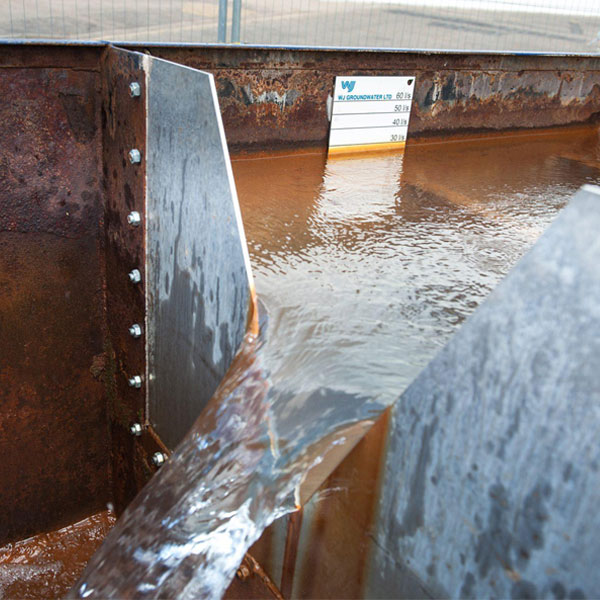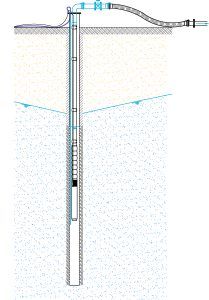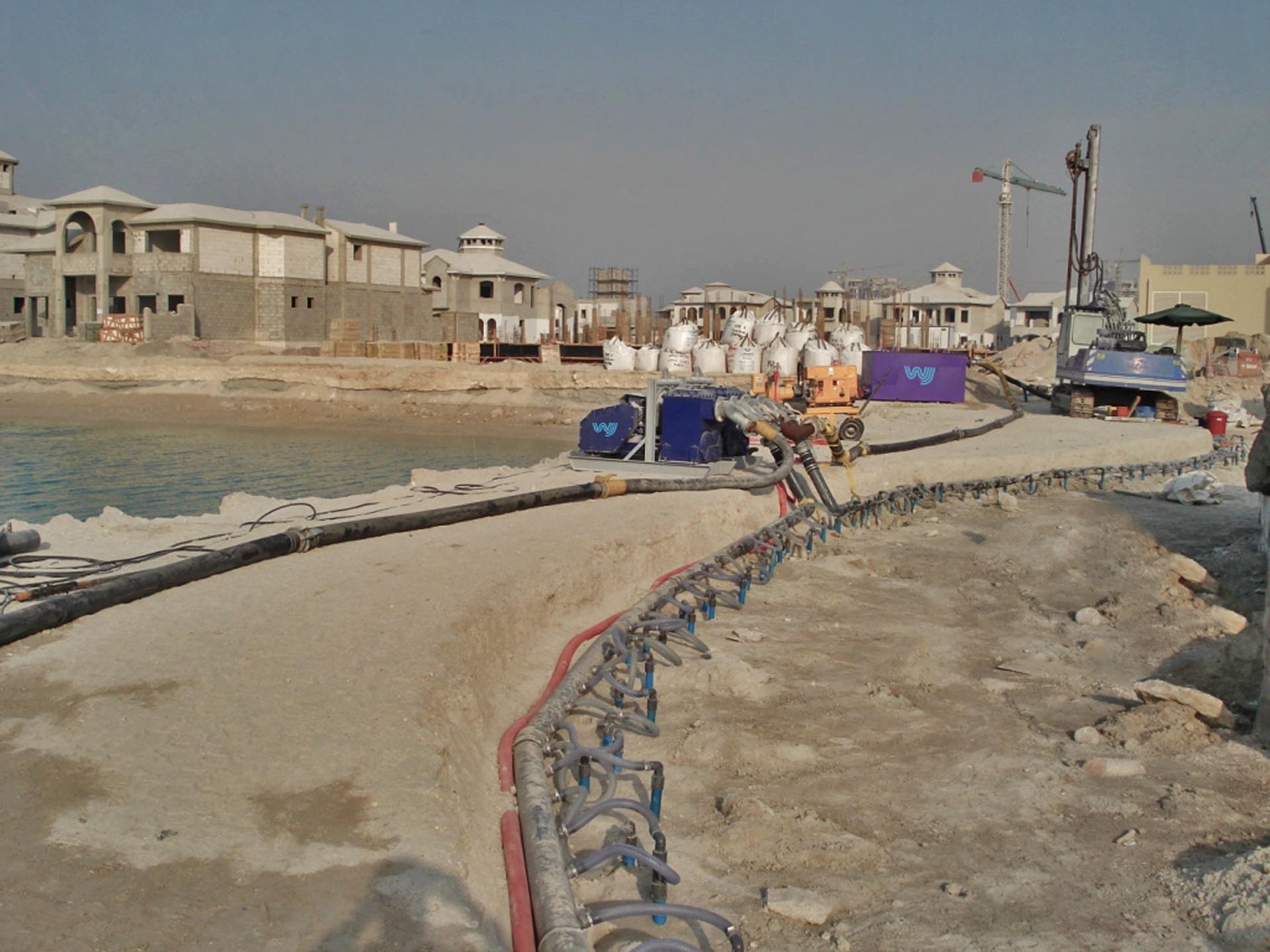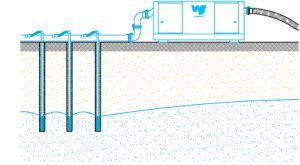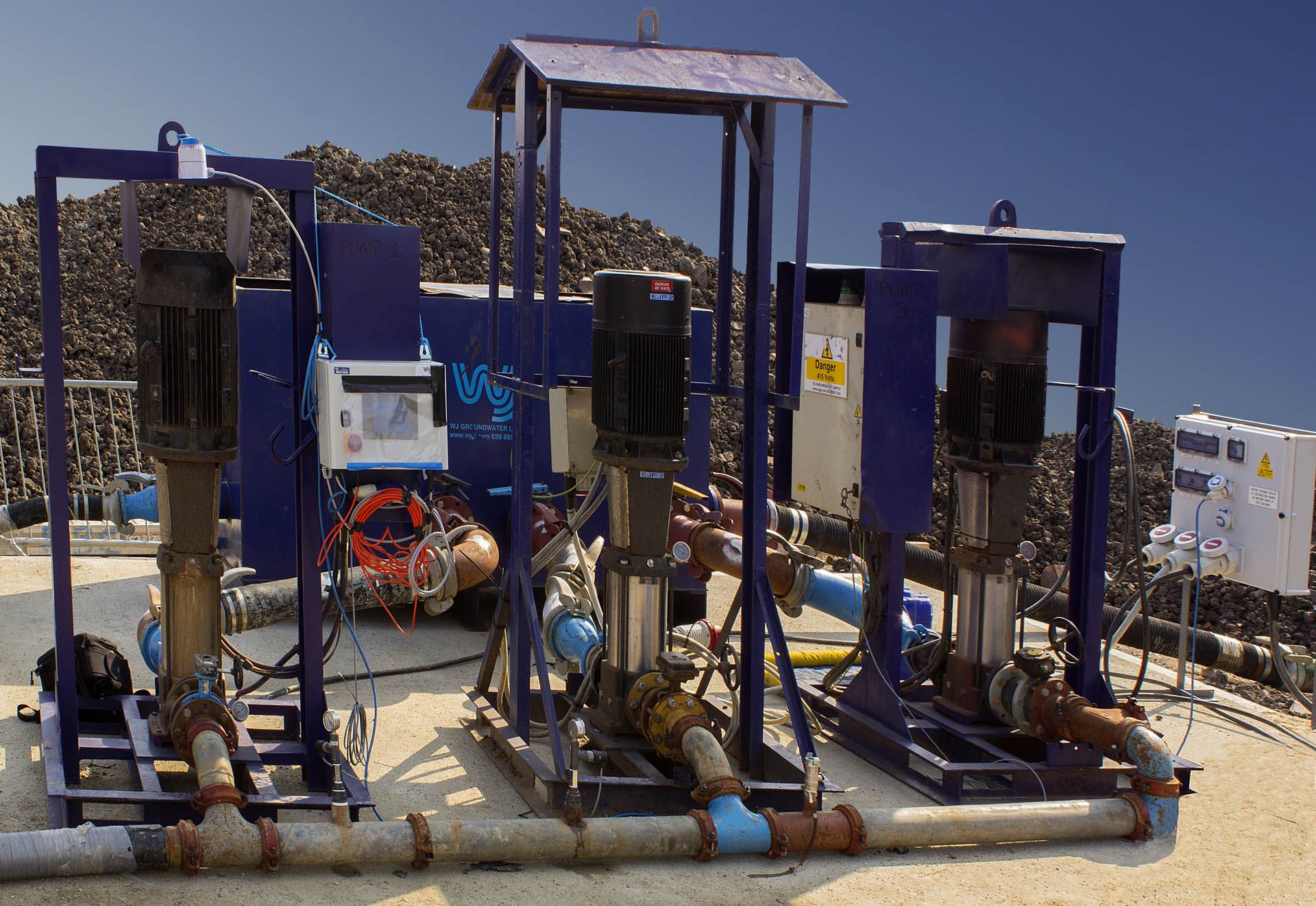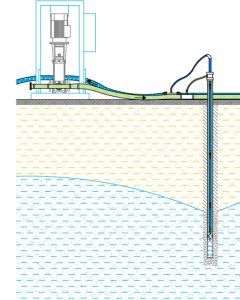Deepwell Systems
Deepwell dewatering systems lower groundwater levels using a series of drilled wells, each fitted with its own electric submersible pump. Large drawdown as much as 40 meters can be achieved. WJ carefully designs and installs deepwell systems to maximise drawdown and pump efficiency whilst ensuring a discharge free of suspended solids.
Why Use Deep Well Systems?
Deepwells are ideally suited to granular soils and rocks, where the permeability is medium to high. The number, depth, and spacing of wells along with size of pumps can be adjusted to meet site conditions. Deepwells are installed with our fleet of rotary drilling rigs and piling drilling rigs. WJ Groundwater only uses high quality machine cut slotted PVC well screen and selected filter materials.
WJ Groundwater uses its significant experience of designing and operating deepwell dewatering systems throughout the Middle East and further afield to design and implement new schemes. With our 30 years of experience, it is common that we have previously dewatered a neighbouring site or worked in similar ground conditions. Deepwell dewatering works extremely well in most ground conditions found in the Middle East including those found in the UAE and Qatar.
WJ Groundwater provides a central control cabin which powers and control multiple pumps from a single location. Control options include automatic mains failure (ATS) switchover to standby power, visual / audio / GSM text alarm systems, and remote data logging for monitoring discharge flows and groundwater levels.
Deepwells are ideal for deep excavations, shafts, basements, underpasses and tunnels.

WJ Qatar Projects
We deliver an outstanding service to clients of all size, from simple residential dewatering to large-scale national projects.

